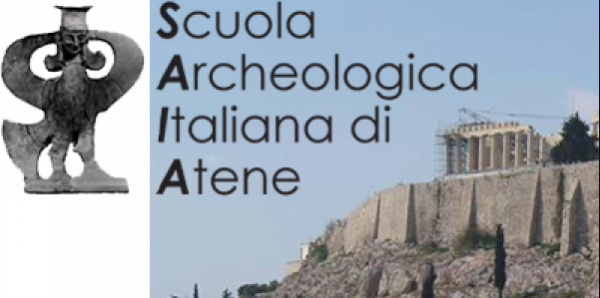On Thursday October 19, 2017, the Rumanian Archaeological Institute in Athens (RAIA) will officially start its activities. The ceremony will be followed by a number of lectures about subjects of common archaeological interest in Rumania and Greece. The lectures will be in English and French.
Programme
Day 1
Thursday, October 19th
9.30 – Registration of participants
| I. 10.00 – 10.45 OPENING SESSION |
Chair: Emanuele PAPI, Direttore, Scuola Archeologica Italiana di Atene
Adresses:
Vlad NISTOR, President of the Romanian Archaeological Institute in Athens
Representative of the Hellenic Ministry of Culture (TBC)
Representative of the Ministry of Foreign Affaires of Romania (TBC)
Mircea DUMITRU, Rector of the University of Bucharest
Coffee break: 10.45 – 11.00
| Panel I : 11.00 – 12.45 |
Chair: Alexandru AVRAM (Université de Le Mans)
1.Emilian ALEXANDRESCU (RAIA, University of Bucharest)
Giurgiu – Malu Roșu (Roumanie). Un grand site du Paléolithique Supérieur
- Radian ANDREESCU, Dr. Katia MOLDOVEANU (National History Museum
of Romania, Bucharest)
Vitănești-Măgurice. A 5th millennium BC Eneolithic tell settlement on the Lower Danube
- Neculai BOLOHAN (”Alexandru Ioan Cuza” University of Iași)
Us and them…Looking from the North toward the Northern Periphery of the Mycenaean World
- Carol CĂPIȚĂ (University of Bucharest)
Transitional phenomena in the space between the Danube and the Black Sea at the end of Prehistory
Discussions: 12.20 – 12. 45
Lunch break: 12.45 – 14.30
| Panel II: 14.30 – 16.30 |
Chair: Lucrețiu. BÎRLIBA (RAIA, ”Alexandru Ioan Cuza” University of Iași)
5.Alexandra ŢÂRLEA (University of Bucharest)
A World Cast in Bronze. Trends in the depositional pattern of hoards during Bronze Age and Early Iron Age in Romania
6.Alexandra LIȚU (University of Bucharest)
Divinités et sanctuaires grecs à l’époque archaïque en Mer Noire
- Alexandru AVRAM (Université de Le Mans)
Recherches récentes dans la zone sacrée d’Istros
- Mihaela MARCU-BOGAN (University of Bucharest)
Les routes commerciales dans la région ouest-pontique à la basse époque classique et a la haute époque hellénistique
Discussions: 15.50 – 16.15
Coffee break: 16.15 – 16.35
| Panel III : 16.35 – 18.00 |
Chair:Emilian ALEXANDRESCU (RAIA, University of Bucharest)
- Gabriel TALMAŢCHI(Museum of National History and Archaeology of
Constanța),Alexandra ŢÂRLEA(University of Bucharest)
Coins and deities. Remarks on the monetary iconography of the Greek colonies from the Western coast of the Black Sea during the Hellenistic period
- Laurențiu CLIANTE (Museum of National History and Archaeology of
Constanța), Alexandra LIȚU(University of Bucharest)
Glass and Mythology in Tomis
- Mădălina STRECHIE(University of Craiova)
A “Clash of Civilizations” in Antiquity: the Greek-Persian Wars
Discussions: 17.35 – 18.00
Day 2
Friday, October 20th
| Panel IV : 9.30 – 11.00 |
Chair: Carol CĂPIȚĂ (University of Bucharest)
- Cătălin-Mircea NOPCEA, Dr. Radu PETCU, Dr. Dan VASILESCU(National
Museum for History and Archaeology Constanța)
Late Hellenistic tombs from Tomis
- Lucrețiu BÎRLIBA (RAIA, ”Alexandru Ioan Cuza” University of Iași)
Ibida: the archaeological and epigraphic file of a Roman city in Moesia Inferior and Scythia
- Cristian GĂZDAC(Institute of Archaeology and Art History/‘Babes-
Bolyai’ University, Cluj-Napoca)
General and specific patterns of coin hoarding in the Balkans in the light of the new project “Coin Hoards of the Roman Empire” (Oxford – Cluj-Napoca – Athens)
Discussions: 10.30 – 11.00
Coffee break: 11.00 – 11.15
| Panel V: 11.15 –13.00 |
Chair:Valentin BOTTEZ (RAIA. University of Bucharest)
- Dorel MICLE, Andrei STAVILĂ, Cristian FLOCA, Alexandru HEGYI(West
University of Timișoara)
The Unip “Dealu Cetăţuica” archaeological site. An example of good practice in archeology of interdisciplinary methods
- Florica BOHÎLȚEA-MIHUȚ (University of Bucharest)
The local population of North – Danubian Roman provinces through iconographic sources (1st-3rdcenturies AD) – some new perspectives of interpretation
- Traian CLIANTE, Tiberiu POTARNICHE, Aurel MOTOTOLEA
(Museum of National History and Archaeology Constanța), Dr. Gabriel
JUGANARU (Arheoresearch Ltd Tulcea)
Elements of urbanism in the Roman and Roman-Byzantine periods at Tomis
Discussions: 12.15 – 12.45
Lunch break: 12.45 – 14.15
| Session VI: 14.15 – 16.15 |
Chair: Lia BRAD-CHISACOF (Institute for South-East European Studies, Bucharest)
- ValentinBOTTEZ, AlexandraȚÂRLEA, AlexandraLIȚU, IuliaILIESCU
(University of Bucharest), Al. Bivolaru (Aix-Marseille Université)
Late Roman urban planning in Istros. A previously unknown 6th c. AD insula on the city’s acropolis
19.Ioan Carol OPRIȘ (University of Bucharest)
The northern supply chain in quaestura exercitus.6th to early 7th c. amphorae at Capidava – archaeology of the annona for limes scythicus14.50 – 15.10
- AlexandraBIVOLARU, CristopheMORHANGE(Aix-Marseille Université)
New insights into human-environment dynamics in the Danube delta in ancient times. A state of art
- Antal LUKACS (RAIA, University of Bucharest)
Les églises au plan d’origine byzantine de la Roumanie (Xe – XIVe siècles)
Discussions: 15.35 – 16.10
Coffee break: 16.10 – 16.30
| Panel VII: 16.30 – 18.30 |
Chair: Prof.dr. Vlad NISTOR (RAIA, University of Bucharest)
- Dorel MICLE, Alexandru HEGYI (West University of Timișoara)
Geophysical Prospections in Romanian Archeology: a necessity in the risk management regarding cultural heritage
- Ovidiu Catalin BOJICA, Dr. Aris TRASAVOPOULOS
Archaeology and Community. A Romanian Archaeologist ‘s Greek Experience
- Lia BRAD-CHISACOF (Institute for South-Eastern European Studies,
Bucharest)
Enlightenment, intense development or a long 18th century
- Laura CĂPIȚĂ (Institute for Education Studies, Bucharest)
What kind of History through textbooks? Exploring Ancient Greece and Rome in the Romanian recent History textbooks
Discussions: 17.50 – 18.10
Closing remarks
